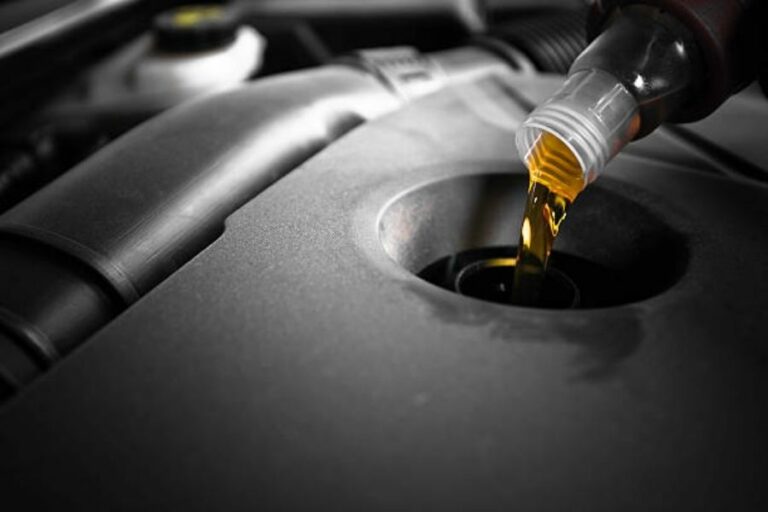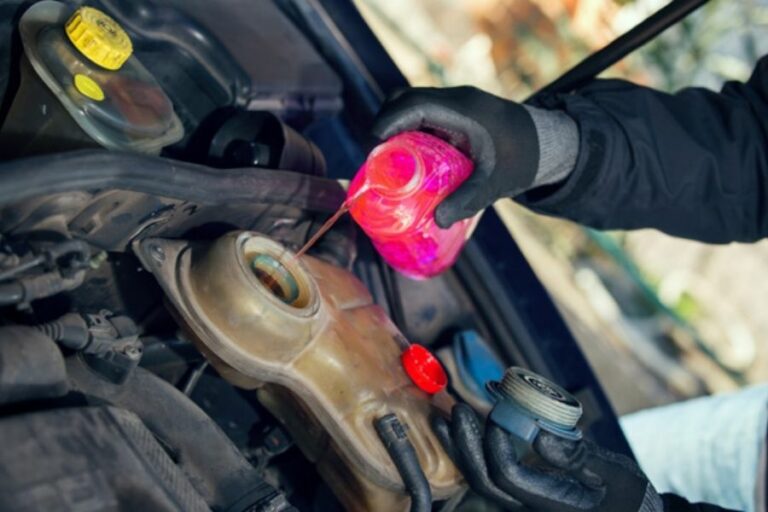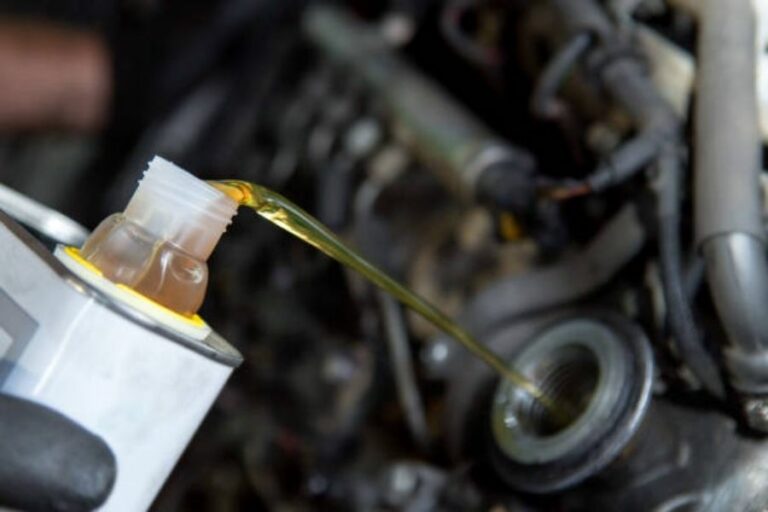Will Low Transmission Fluid Cause Car to Stall
Yes, low transmission fluid can cause your car to stall. When your car’s engine is running, the transmission fluid helps to cool and lubricate the transmission. If the level of transmission fluid gets too low, it can’t do its job properly.
This can cause the transmission to overheat and eventually fail. If your car stalls while you’re driving, it could be because the transmission has failed due to low fluid levels.
If your car has low transmission fluid, it could stall. This is because the transmission relies on fluid to keep all of the moving parts properly lubricated. If there isn’t enough fluid, those parts can start to wear down and eventually fail.
If your car does stall due to low transmission fluid, you’ll likely need to have it towed to a mechanic for repairs.
What are the Symptoms of Low Transmission Fluid?
If your car has an automatic transmission, then you need to be aware of the signs of low transmission fluid. Transmission fluid is what helps to keep your car’s gears shifting smoothly. If the fluid level gets too low, then it can cause some serious problems.
Here are some symptoms of low transmission fluid: 1. Your car starts to make strange noises when shifting gears. This is usually a sign that the fluid is getting low and needs to be topped off.
2. The shifts in your car start to feel less smooth than usual. This can be another sign that the fluid level is getting low and needs to be refilled. 3. Your car starts to slip out of gear while driving.
This is a serious problem that can lead to an accident if not fixed right away. It means that the transmission doesn’t have enough fluid to work properly and needs to be filled up ASAP.
Can Transmission Fluid Cause Stalling?
There are many fluids in a car that can cause stalling if they are low, dirty, or contaminated. Transmission fluid is one of these fluids. If the transmission fluid is low, it can cause the car to stall because there is not enough pressure to keep the transmission gears engaged.
If the transmission fluid is dirty, it can clog up the filters and passages in the transmission, causing it to stall. Finally, if the transmission fluid is contaminated, it can cause all sorts of problems including stalling. The best way to prevent transmission fluid from causing stalling is to make sure that it is at the proper level and that it is clean and free of contaminants.
Can Transmission Problems Cause Car to Stall While Driving?
If your car stalls while you’re driving, it could be due to a problem with the transmission. The transmission is responsible for transferring power from the engine to the wheels, and if it’s not working properly, the car won’t be able to move. There are a number of different things that can go wrong with the transmission, and any of them could cause the car to stall.
One possibility is that the transmission fluid is low or dirty. Transmission fluid lubricates and cools the components of the transmission, so if it’s low, those components will start to wear out. Dirty fluid can also cause problems because it can clog up the filters and restrict airflow.
Either way, if there’s not enough fluid or it’s too dirty, it could cause the car to stall. Another possibility is that one of the sensors in the transmission is faulty. These sensors are responsible for monitoring various aspects of the transmission and they send signals to the computer which tells it how to adjust things like shifting gears.
If a sensor isn’t working properly, it can throw off these signals and cause problems like stalling. If your car has been stalling while you’re driving, it’s important to get it checked out by a mechanic as soon as possible. They’ll be able to diagnose what exactly is causing the problem and get your car back on the road in no time.
What Would Cause a Car to Stall While Driving?
A car stalls while driving when the engine fails to produce enough power to keep the car moving. This can be caused by a number of things, such as a loss of spark, fuel, or compression. A spark is necessary to ignite the air/fuel mixture in the cylinders.
If there’s no spark, or if it’s weak, the mixture won’t ignite and the engine will stall. A number of things can cause a loss or decrease in spark, including bad spark plugs, weak ignition coils, dirty distributor caps and rotors, and loose wires or connections. Fuel is necessary for combustion.
If there’s no fuel, or not enough pressure to deliver it to the injectors, the engine will stall. A clogged fuel filter can restrict fuel flow and cause an engine to stall. So can a faulty fuel pump or pressure regulator.
Running out of gas is also a common cause of stalling. Compression is necessary for combustion. If there’s insufficient compression due to low cylinder pressure (the “piston doesn’t go up all the way”), the engine will stall.
Worn piston rings or valves that don’t seal properly can cause low cylinder pressure and consequent stalling. Stalls can also be caused by external factors like overheating (from climbing a long hill on a hot day, for example), transmission problems (like failing to shift into higher gears at higher speeds), dragging brakes (caused by a brake pad that’s sticking or caliper that needs adjustment), and even something as simple as leaving your handbrake on!
Can Low Transmission Fluid Cause the Car Not to Start
Have you ever gone to start your car and it just wouldn’t turn over? You may have thought to yourself, “Could it be the battery?” Or, “Maybe I left the lights on last night.”
But if neither of those is the case, it could be that your transmission fluid is low. Yes, transmission fluid is essential to starting your car. The transmission is responsible for transferring power from the engine to the wheels, and without proper fluid levels, your car won’t move.
Even if the engine turns over, without enough fluid going to the transmission, your car will stay put. If you’re unsure whether or not your transmission fluid is low, there are a few telltale signs. For example, if you notice that your gears are slipping or grinding when you shift them, that’s a good indication that something isn’t right.
Another sign is if your car takes longer than usual to change gears or get up to speed. If either of these things is happening, it’s time to check your transmission fluid levels. To do so, simply remove the dipstick from the transmission (it’s usually located near where the shifter knob is) and check the level of fluid against the markings on the stick.
If it’s below where it should be, add more until it reaches the correct level. Once you’ve done that, you should find that starting your car is no longer a problem!
Low Transmission Fluid Symptoms Automatic
If your car has an automatic transmission, then you know that there are a lot of moving parts that work together to shift the gears. Transmission fluid is what keeps all of those parts lubricated and working properly. If the level of transmission fluid gets too low, it can cause some serious problems.
Here are some low transmission fluid symptoms to watch out for:
1. The first symptom is usually a delayed response when you put your foot on the gas pedal. It might feel like the car is hesitating or lagging before it finally kicks into gear.
This is because the gears are not being properly lubricated and they are starting to grind against each other.
2. Another symptom is hard shifting. This means that instead of smoothly shifting between gears, the car will jerk or jolt as it changes gears.
This can be really uncomfortable and even dangerous if you’re driving at high speeds.
3. You might also notice that your car’s engine is revving higher than usual when you’re accelerating. This happens because the lower gears are not engaged properly due to a lack of lubrication, so the engine has to work harder to make up for it.
4. Finally, one of the most serious low transmission fluid symptoms is overheating. If your car’s transmission starts to overheat, it can cause major damage and even lead to a complete breakdown.
How Far Can I Drive on Low Transmission Fluid
If your transmission is low on fluid, it’s important to take action immediately and top it up. But how far can you actually drive on low transmission fluid before doing serious damage? The answer depends on a few factors, including the type of transmission you have and the severity of the leak.
If you have an automatic transmission, it’s generally safe to drive for a short distance while low on fluid. However, if you have a manual transmission, it’s best to avoid driving altogether until the issue is fixed. If your transmission is leaking fluid, it’s also important to determine the source of the leak and fix it as soon as possible.
Otherwise, you’ll likely find yourself needing to top up your fluid more often than usual. Driving with low transmission fluid can cause lasting damage to your car, so it’s best to avoid it if at all possible.
What Happens If You Drive on Low Transmission Fluid
If your car has low transmission fluid, it could lead to some serious problems. The transmission is responsible for providing power to the wheels, and if the fluid level is low, it can cause the transmission to overheat or even fail. This can be a very costly repair, so it’s important to keep an eye on your transmission fluid level and top it off if necessary.
Can Transmission Fluid Get Low Without a Leak
It’s possible for your transmission fluid to get low without a leak. There are several reasons why this might happen, but the most common one is simply evaporation. Over time, transmission fluid can evaporate out of the system through the dipstick tube.
This is especially true if you don’t drive your vehicle very often. Another possible reason for low transmission fluid is an improperly sealed pan. If your transmission pan isn’t sealed correctly, transmission fluid can slowly seep out over time.
You may not notice any leaks, but gradually the level of fluid will go down. If you think your transmission fluid might be low, it’s important to check it as soon as possible and top it off if needed. Transmission problems can be expensive to fix, so it’s best to catch them early on.
Nissan Cvt Transmission Low Fluid Symptoms
If you own a Nissan with a CVT transmission, you know that this type of transmission is different than a traditional automatic. And although CVT is more reliable than other transmissions, it’s still important to be aware of the symptoms of low transmission fluid. The most common symptom of low transmission fluid in a Nissan CVT is slipping.
If your car begins to slip while driving, it’s likely because the transmission fluid is low. You may also notice that your car hesitates when accelerating or that the engine revs but the car doesn’t move as quickly as it should. These are all signs that your Nissan needs more transmission fluid.
Other symptoms of low CVT fluid include strange noises coming from the transmission and gears grinding when shifting. If you notice any of these issues, it’s important to take your car to a mechanic right away. Only a trained professional can properly diagnose and fix the problem.
Nissan recommends checking the CVT fluid level every 30,000 miles or so. But if you begin to notice any of the above symptoms, don’t wait – take your car in for service immediately.
Can Low Transmission Fluid Cause Shaking
If your car is shaking, it could be a sign that your transmission fluid is low. Transmission fluid lubricates the moving parts in your transmission, so if it’s running low, those parts can start to grind and cause a shake. If you notice your car shaking, check your transmission fluid level and top it off if necessary.
Why Would an Automatic Car Stall While Driving
One of the most common complaints we hear from drivers is that their automatic car stalled while driving. There are a few reasons this could happen, but the most likely cause is that the engine was starved of oil. If your engine doesn’t have enough oil, it can’t lubricate itself properly and will eventually seize up.
The best way to prevent this from happening is to check your oil level regularly and top it off if necessary. If you do find yourself in a situation where your car stalls while driving, don’t panic! Just gently coast to the side of the road and turn on your hazard lights until help arrives.https://www.youtube.com/embed/N9_EjoRTOzY
Conclusion
If your car has low transmission fluid, it could stall. This is because the transmission needs fluid to function properly. If the level is too low, it can cause the transmission to overheat and fail.



![What is the Alternative to Nissan CVT Fluid Ns-2? [Explored]](https://carfluidpro.com/wp-content/uploads/Nissan-CVT-Fluid-NS2-Alternative-768x512.jpg)


